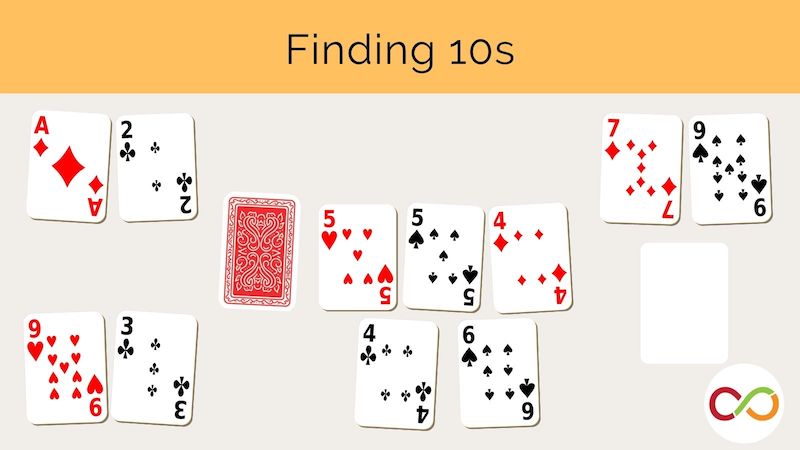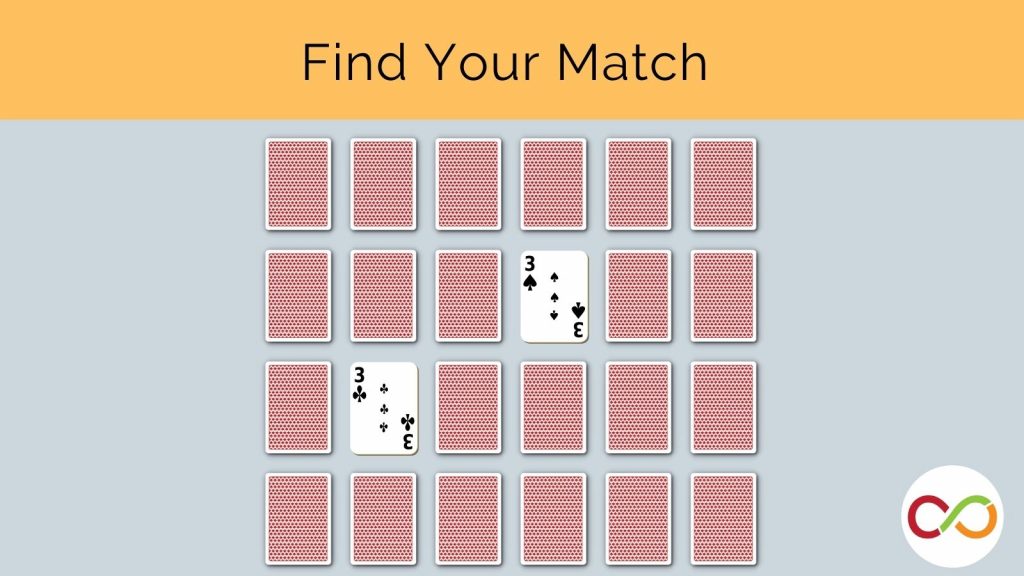Math Code
Primary (Age 6 – 9)
Curriculum Goal
Primary: Number Sense
- Read, represent compose and decompose whole numbers up to and including 200, using a variety of tools and strategies, and describe various ways they are used in everyday life.
- Determine what needs to be added to or subtracted from addition and subtraction expressions to make them equivalent.
- Identify and use equivalent relationships for while numbers up to 100, in various contexts.
Context
- Students work in pairs.
- Students should have prior experience with addition and subtraction.
Materials
In-person version
- Writing tool
- Paper
- Pre-made math cards with different numbers and equations (Appendix A)
Online version
- Game file (Playingcards.io upload instructions)
- Video conference capabilities
Lesson
- The goal of the game is to create pairs of equivalent numbers.
- Students decide who is going to be the leader of the game by pulling a card from the deck. The player who pulls the highest number is the leader.
- Players place the cards on the table face up.
- The leader will select a card in their mind and provide their partner with a clue about that card in the form of an equation (e.g., 15-1).
- The partner needs to look for two answer cards on the table: one with a whole number answer (I.e., 14) and one with an equation (I.e., 7+7). They must both be equivalent to the equation given by the leader.
- Encourage students to discuss their strategies when choosing their cards. For example, students would express that 7+7=14, similarly to 15-1=14.
- When the partner has identified the two equivalent cards, the leader will continue giving clues until all cards on the table are matched.
- Students should be encouraged to use a piece of paper and a pencil if they are struggling to do the math in their mind.
Look Fors
- Can students readily identify different equations to achieve the desired sum?
- What strategies do children implement to determine the appropriate equations?
- Can children add or subtract two single- or double-digit numbers?
Extension
- Have two pairs of students create their own sets of cards and switch them to complete the game.
- Create a more challenging set of cards that have a sum total greater than 100.
- Integrate a card set with fractions.
- Introduce multiplication and division number cards.
Created by Courtney Wickware. Adapted by The Robertson Program.
Share this lesson
Share on facebook
Share on twitter
Share on email


